All Categories



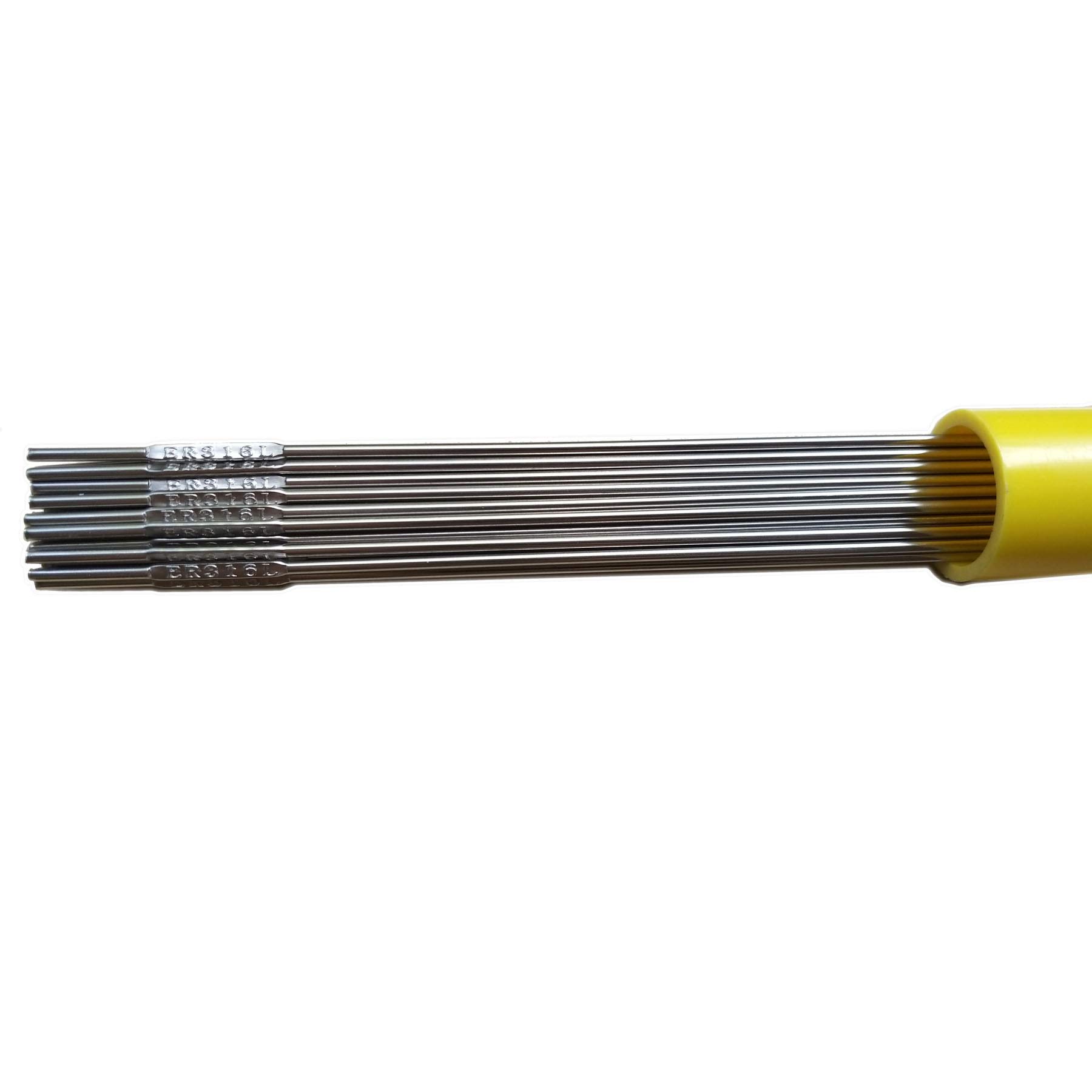
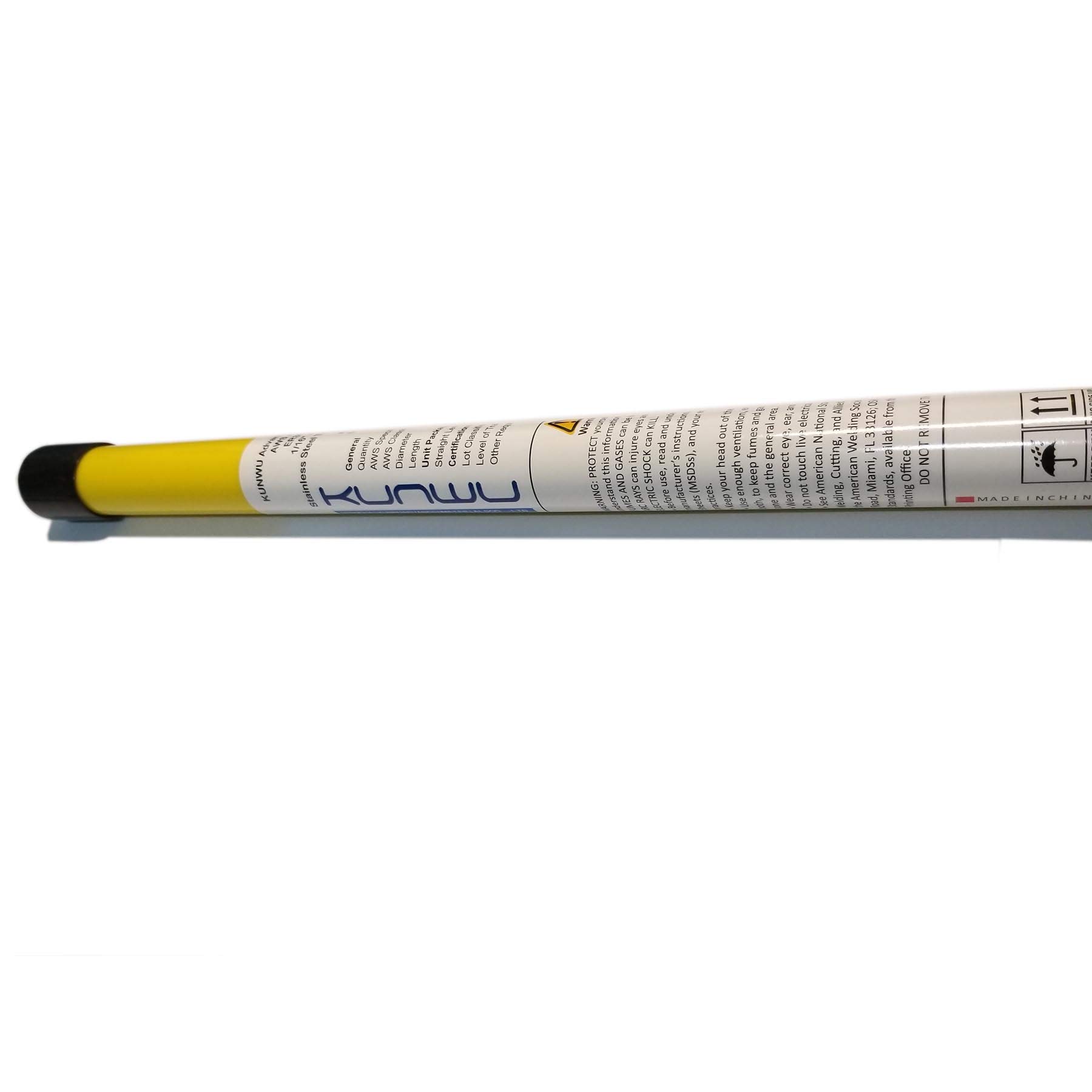
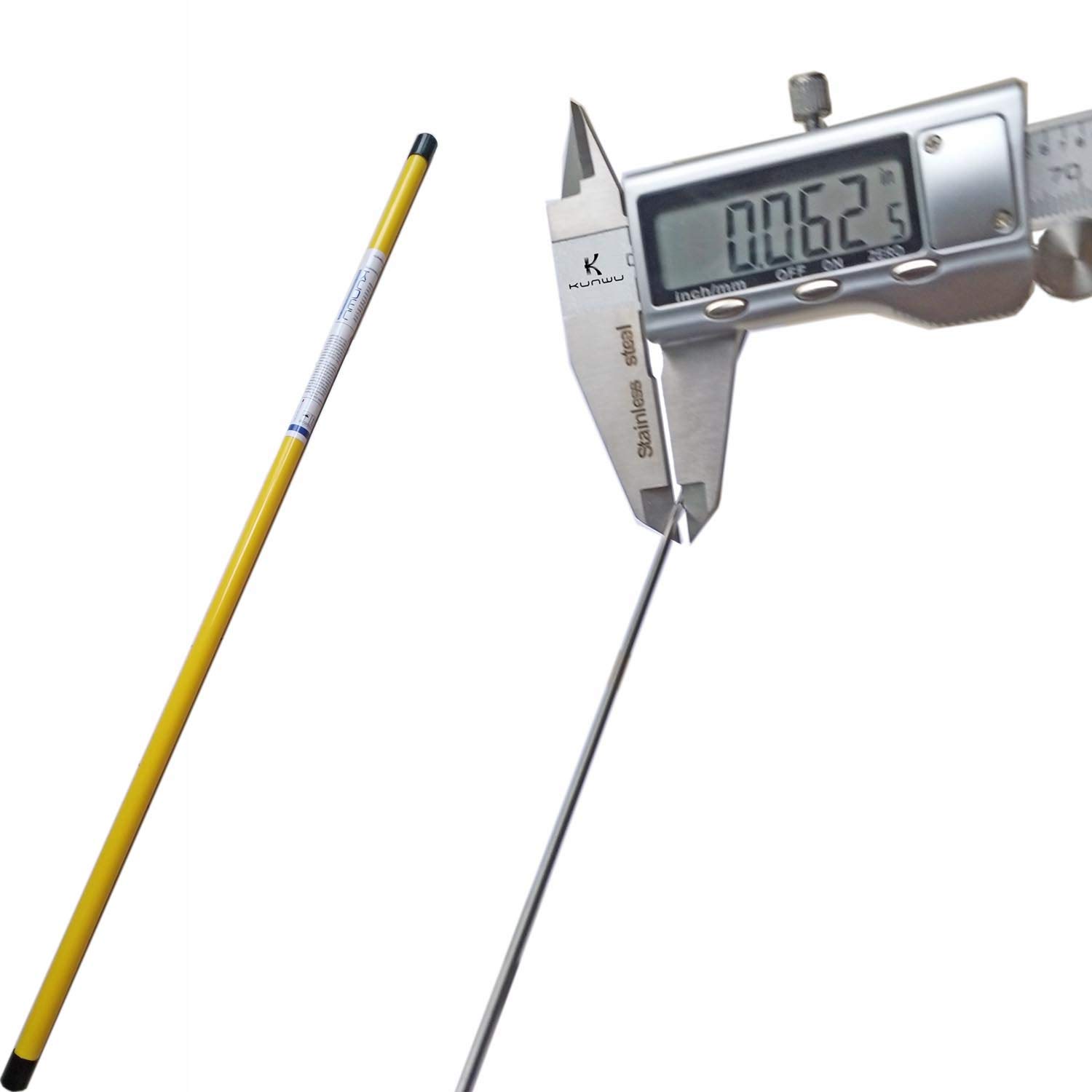
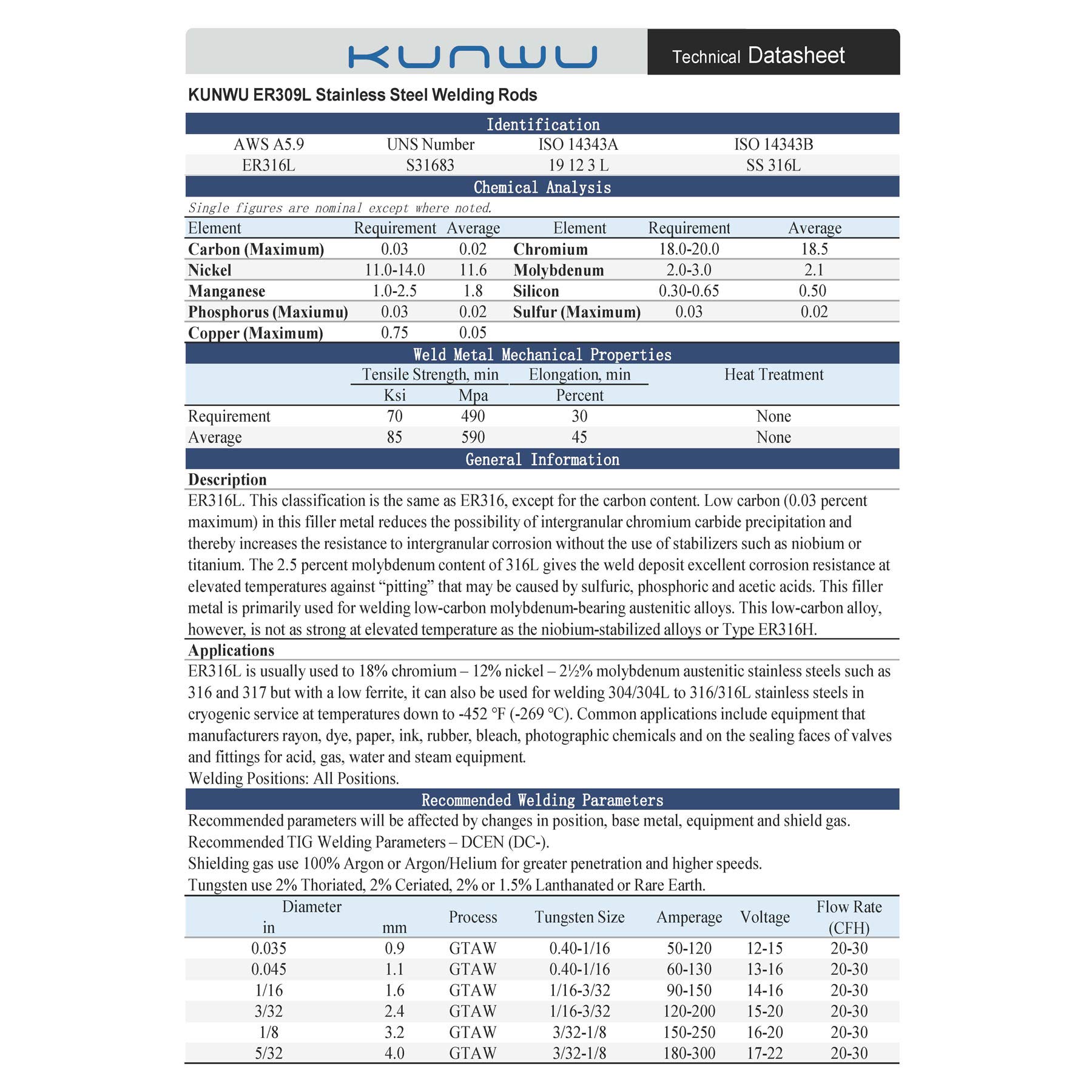
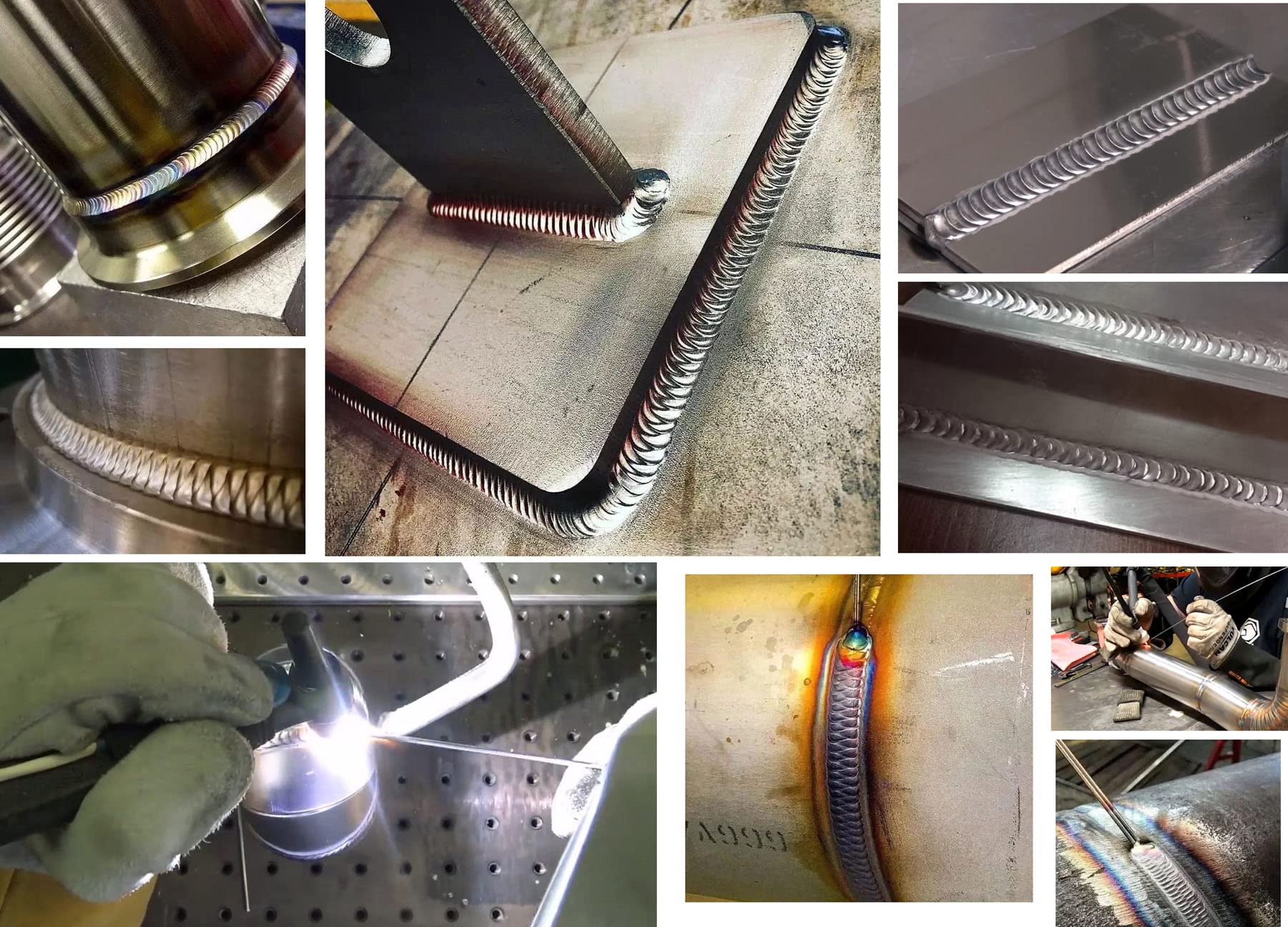

KUNWU Stainless Steel TIG Welding Rods ER316L 1/16" x 36" 1Lb (1, 1/16 inch (0.063 inch), 1.6 mm)
Share Tweet
Get it between 2025-02-18 to 2025-02-25. Additional 3 business days for provincial shipping.
*Price and Stocks may change without prior notice
*Packaging of actual item may differ from photo shown
- Electrical items MAY be 110 volts.
- 7 Day Return Policy
- All products are genuine and original
- Cash On Delivery/Cash Upon Pickup Available








KUNWU Stainless Steel TIG Welding Rods ER316L Features
-
Low carbon (0.03 % maximum) in this filler metal reduces the possibility of intergranular chromium carbide precipitation and thereby increases the resistance to intergranular corrosion without the use of stabilizers such as niobium or titanium.
-
The 2.5 % molybdenum content of 316L gives the weld deposit excellent corrosion resistance at elevated temperatures against “pitting” that may be caused by sulfuric, phosphoric and acetic acids.
-
ER316L is usually used to 18% chromium – 12% nickel – 2.5% molybdenum austenitic stainless steels such as 316 and 317 but with a low ferrite, it can also be used for welding 304/304L to 316/316L stainless steels in cryogenic service at temperatures down to -452 ℉ (-269 ℃).
-
Primarily used for welding low-carbon molybdenum-bearing austenitic alloys. Common applications include equipment that manufacturers rayon, dye, paper, ink, rubber, bleach, photographic chemicals and on the sealing faces of valves and fittings for acid, gas, water and steam equipment.
-
Welding Positions: All Positions.
About KUNWU Stainless Steel TIG Welding Rods ER316L
ER316L. This classification is the same as ER316, except for the carbon content. Low carbon (0.03 percent maximum) in this filler metal reduces the possibility of intergranular chromium carbide precipitation and thereby increases the resistance to intergranular corrosion without the use of stabilizers such as niobium or titanium. This filler metal is primarily used for welding low-carbon molybdenum-bearing austenitic alloys. This low-carbon alloy, however, is not as strong at elevated temperature as the niobium-stabilized alloys or Type ER316H.


















